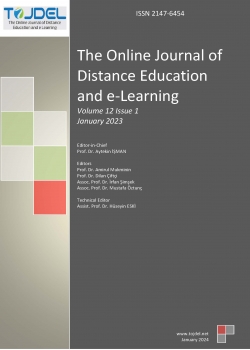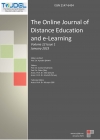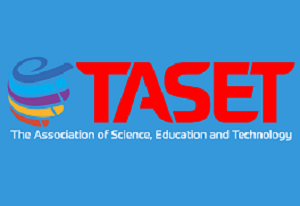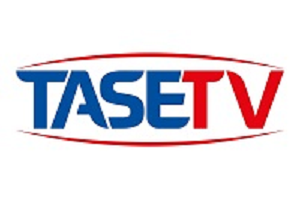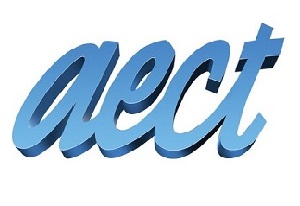TOJDEL - Volume 12 - Issue 1 - January 2024
 CURRENT TRENDS OF MOOCS IN INDIA: HISTORICAL BACKGROUND, DEVELOPMENT AND CHALLENGES
CURRENT TRENDS OF MOOCS IN INDIA: HISTORICAL BACKGROUND, DEVELOPMENT AND CHALLENGES Debabrata Mandal, Vijay Kumar Yadav
Abstract:
This article investigates the many variables that impact the adoption of Massive Open Online Courses (MOOCs) in the Indian higher education sector. A MOOC is similar to a tool for offering educational materials via an online platform to a sizable number of students around the world with the potential of receiving education from the best schools. In 2008, MOOCs were established and attained momentum in 2012 as a popular learning tool (Biswas & Sarkar, 2020). At present, the enrolment of students in MOOCs has grown tremendously. After the USA, India is leading the universal outgrowth in student engagement (Reddy, 2020). Observing the enhancement of enrolment in the higher education sector and also fulfilling the demands of the students, India has launched different project programme for offering MOOC courses in Higher education. At present, platforms such as NPTEL (2003), mooKIT (2014), IITBombayX (2016), and SWAYAM are used in India to offer MOOC courses (2016). MOOCs have played a major role in increasing the Gross Enrolment Ratio in the field of Higher Education (Banwari, 2018). A key issue that Indian higher education is currently grappling with is the lack of coordination and its application to various economic sectors. However, these problems are eradicated by the MOOC programme because maximum courses of the MOOCs are related to industry demand and needs. In this article, conceptual and technical descriptions of different MOOC platforms are provided along with their components and features. The present study also attempts to explain why MOOCs are so necessary in countries like India and what are the benefits and challenges for the implementation of MOOCs. MOOCs in countries like India provide lifelong opportunities to learn and work together. In a large nation such as India, MOOCs promote the idea of inclusive, lifelong learning.
 IMPLEMENTATION OF MOOCS: APPROACHING CHALLENGES AND PROSPECTS OF INDIAN HIGHER EDUCATION
IMPLEMENTATION OF MOOCS: APPROACHING CHALLENGES AND PROSPECTS OF INDIAN HIGHER EDUCATION Kanhaiya Kumar Sinha
Abstract:
Learning must be considered a milestone to generate a knowledgeable and progressive society. The continuous up-gradation of knowledge and acquiring relevant skills to get livelihood opportunities can only be possible through learning. To ensure a sustainable and advanced civilisation in the 21st century industrial and digital setup, people are earnestly and ardently, owing to their belief in 'earning while learning,' looking for a global form of learning. In this context, different types of online courses, particularly MOOCs and OERs (Open Educational Resources), provide people with innumerable opportunities by introducing them to a global form of learning.
 LEARNING-TRANSFER-RESULT METHOD OF EVALUATING THE EFFECTIVENESS OF MASSIVE OPEN ONLINE COURSES IN HIGHER EDUCATION
LEARNING-TRANSFER-RESULT METHOD OF EVALUATING THE EFFECTIVENESS OF MASSIVE OPEN ONLINE COURSES IN HIGHER EDUCATION Jayasree Ravi
Abstract:
The objective of this research is to have a constructive influence on the development of online courses, consequently raising their enrollment, acceptance, and completion rates. Massive Online Open Courses (MOOCs) are designed to make education accessible to all students on a global scale. MOOC platforms have rapidly grown in recent years as a result of the COVID-19 pandemic and even the online learning trend. However, due to variables including course quality, internet connectivity, and lack of exposure, MOOCs' reach has been constrained. Students who sign up for MOOC courses frequently drop out owing to variety of reasons, such as a lack of interest or inadequate learning. The effectiveness of MOOCs among students has been the focus of numerous research. These research help MOOCs develop and expand. Student feedback is a well-liked metric for assessing a MOOC's efficacy. The Learning-Transfer-Result (LTR) technique is suggested in this research as a way to assess the efficiency of MOOCs in higher education. This technique was developed using Student feedback, who registered in various online courses, were asked to provide input under the headings of learning, transfer, and results. The replies were then examined. The findings of this study offer guidance to organizations who intend to produce online content in the future and to improve student retention rates through course customization.
 SCOPE OF DISTANCE LEGAL EDUCATION IN DIGITAL AGE-FUTURISTIC APPROACH IN INDIA
SCOPE OF DISTANCE LEGAL EDUCATION IN DIGITAL AGE-FUTURISTIC APPROACH IN INDIA Avinash Bhagwan Awaghade, V. Shyam Kishore
Abstract:
Legal education is one of the most dynamic fields as it deals with diverse interest groups and provides various undergraduate, graduate, postgraduate, and doctoral programs and multiple courses.
The objectives of the article are to identify the scope of distance education through the digital mode of communication and problems of digitalisation of legal education, as well as formulate directions for introducing a distance legal education framework. Further, the present article will analyse the scope of distance learning in professional and non-professional legal education. The present article will discuss issues in the adoption of distance legal education approach by law schools in India in the context of the post-COVID pandemic.
The UGC and BCI in India have suggested specific changes in the existing framework of legal education. The changes are needed to re-envision in the context of the COVID-19 pandemic. The COVID-19 pandemic has forced us to rethink the transformation of legal education with demographic and technological changes. The information and technological disruption will forever transform the future of both legal education and legal practice.
The present article will develop a framework for distance legal education through recommendations and suggestions.
 SMARTPHONE USE AND ITS IMPACT ON THE ACADEMIC PERFORMANCE OF THE UNDERGRADUATE STUDENTS
SMARTPHONE USE AND ITS IMPACT ON THE ACADEMIC PERFORMANCE OF THE UNDERGRADUATE STUDENTS Lokman Ali
Abstract:
The present study was conducted to determine the amount of smartphone use, its impact on academic performance, and its health effects on undergraduate students. A total of 240 undergraduate students from the Arts and Commerce streams of Doomdooma College, Assam (India) were selected as samples through the purposive sampling technique. The descriptive survey method of research was followed. A self-made questionnaire and an in-depth interview with the teachers and students were used for data collection. The results of the study reveal that most of the undergraduate students use smartphones in their day-to-day lives, in the classroom, for study, and to communicate with others. Excessive smartphone use has rigorous health effects relating to sleeplessness, tension, headaches, eye strain, etc.
 STUDENT TEACHERS’ PROFESSIONAL AND SOCIAL ICT COMPETENCIES
STUDENT TEACHERS’ PROFESSIONAL AND SOCIAL ICT COMPETENCIES Ilfa Zaidi, Mohd Aquib Shah, Harjeet Kaur Bhatia
Abstract:
In the educational system, Information and Communication Technology (hereafter referred as ICT) plays a significant role. Its integration into teaching-learning process helps in providing high-quality education to the learners. Student teachers are the future teachers of a country and play a crucial role in its development. Therefore, they need to be professionally and socially competent in using ICTs. The purpose of this study was to investigate how student teachers perceived their professional and social ICT competencies. A sample of 50 students, who were pursuing B.Ed. were taken from two Indian universities Jamia Millia Islamia and Aligarh Muslim University. Questionnaire was used to collect online data. Data analysis was done by calculating percentage, mean, mode, and standard deviation. The findings revealed that most of the student teachers were found good in almost all the statements of both competencies such as (38.43%) in professional ICT competencies, and (51.18%) in social ICT competencies.
 THE ROLE OF AI IN MATHEMATICS EDUCATION: ASSESSING THE EFFECTS OF AN 'AUTO DRAW' WEBTOOL ON MIDDLE-LEVEL ACHIEVEMENT
THE ROLE OF AI IN MATHEMATICS EDUCATION: ASSESSING THE EFFECTS OF AN 'AUTO DRAW' WEBTOOL ON MIDDLE-LEVEL ACHIEVEMENT Vinod Kumar Kanvaria, Michael Tarance Suraj
Abstract:
This study investigates how artificial intelligence (AI) affects middle school students’ academic performance. Although AI has the potential to revolutionize education, obstacles including poor data quality and a lack of skilled employees prevent its integration. The study examines the impact of an AI-based web tool called Auto Draw on maths success, identifies integration issues, and establishes the skills required for productive AI use in classrooms using a combination of methodologies. The quantitative research shows that employing Auto Draw has significantly improved students' learning outcomes. The qualitative investigation emphasizes the necessity of teacher preparation programs, and legislative frameworks, and acknowledges AI as a supplementary tool while valuing the human component in education.

